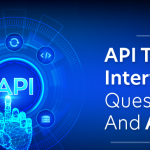Selecting the appropriate testing framework is a pivotal decision in the world of software development. In this blog post, we will conduct an in-depth comparison between two widely-used Python testing frameworks: Pytest vs. Behave. By exploring their unique features, differences, and capabilities, we aim to assist you in making an informed choice for your test automation and behavior-driven development (BDD) needs.
Pytest: The Versatile Testing Framework
Pytest is a versatile and highly-regarded Python testing framework known for its simplicity and extensibility. It serves as a go-to choice for a wide range of testing requirements, including unit testing, functional testing, and API testing. While primarily focused on test automation, Pytest can also handle behavior-driven testing when paired with suitable plugins.
Key Advantages of Pytest:
- Concise Test Code: Pytest minimizes the need for excessive code, resulting in clean and readable test scripts.
- Automatic Test Discovery: It automatically identifies and executes test cases, simplifying test suite maintenance as your project grows.
- Robust Fixture Support: Pytest offers powerful fixture support for setting up and tearing down resources, ensuring a clean and organized testing environment.
- Parameterization: Writing data-driven tests with multiple inputs is straightforward thanks to Pytest’s parameterization feature.
- Rich Ecosystem: Pytest boasts a vast ecosystem of plugins that extend its functionality for various testing needs.
http://informationarray.com/2023/09/19/pytest-vs-testng-choosing-the-right-test-automation-framework/
Behave: Behavior-Driven Development (BDD) for Python
Behave is a Python library tailored for Behavior-Driven Development (BDD). BDD focuses on defining an application’s behavior from the end-user’s perspective, often articulated in plain language. Behave enables you to write tests in a natural language format using Gherkin syntax.
Key Advantages of Behave:
- Natural Language Tests: Behave allows you to write tests in plain language, making them accessible to non-technical stakeholders.
- Clear Specifications: BDD scenarios create unambiguous specifications for application behavior, fostering collaboration between developers, testers, and business analysts.
- Reusability: Behave promotes the reusability of step definitions across different scenarios.
- Living Documentation: Behave generates living documentation directly from your feature files, ensuring that your tests always reflect the application’s behavior.
Pytest vs. Behave: A Detailed Comparison
Let’s delve deeper into the comparison between Pytest and Behave through an extensive table:
| Aspect | Pytest | Behave |
|---|---|---|
| Primary Use | General-purpose testing framework | Behavior-Driven Development (BDD) tool |
| Test Code Syntax | Pythonic | Gherkin syntax for plain language tests |
| Test Discovery | Automatic and easy | Scenarios defined in feature files |
| Fixture Support | Robust support for setup and teardown | Limited; typically handled in Python |
| Parameterization | Supports parameterization for data-driven tests | Limited; often handled in Python |
| BDD Support | Limited; requires plugins for BDD | Built-in support for BDD with Gherkin |
| Collaboration | Focused on developers and testers | Encourages collaboration with stakeholders |
| Reporting | Customizable HTML reports | Living documentation from feature files |
| Learning Curve | Moderate | Low, especially for non-technical users |
Making the Right Choice
Your decision between Pytest and Behave should align with your specific project requirements and your testing philosophy:
- Pytest is a versatile testing framework suitable for various testing needs, and it can accommodate behavior-driven testing with the right plugins. It offers flexibility in testing types and robust fixture management.
- Behave, on the other hand, excels at promoting collaboration between technical and non-technical stakeholders through natural language scenarios. It is ideal when clear specifications and living documentation are essential.
http://informationarray.com/2023/09/19/pytest-vs-selenium-a-comprehensive-comparison-for-test-automation/
Here are some FAQS based on Pytest and Behave
Q1: Is Pytest considered a BDD framework?
A1: No, Pytest is primarily a testing framework rather than a dedicated Behavior-Driven Development (BDD) framework. However, Pytest can incorporate BDD-style testing when used alongside plugins like pytest-bdd or by structuring tests with BDD concepts.
Q2: Is Pytest superior to Selenium?
A2: Pytest and Selenium serve distinct purposes in the field of testing. Pytest is a testing framework used for structuring and executing tests, while Selenium is a specialized tool for automating web browsers and conducting UI testing. The choice between them depends on your specific testing requirements.
Q3: How does Python Cucumber differ from Behave?
A3: Python Cucumber is not a standalone tool but rather a Python-based implementation of Cucumber, a popular BDD framework. Behave, on the other hand, is a Python library designed specifically for Behavior-Driven Development. Both enable you to write tests in a BDD-style format, but they differ in their implementation and integration with Python.
Q4: What are some limitations of Pytest?
A4: While Pytest is a robust testing framework, it does have certain limitations. These include a moderate learning curve for beginners, limited built-in support for BDD when compared to dedicated BDD frameworks, and the need to rely on plugins for certain advanced features. However, these limitations are often balanced by the framework’s strengths and flexibility.
Ultimately, your choice depends on your team’s expertise, the nature of your project, and the level of collaboration you aim to achieve. Both frameworks have their strengths and can significantly enhance your test automation and BDD efforts when used effectively.








